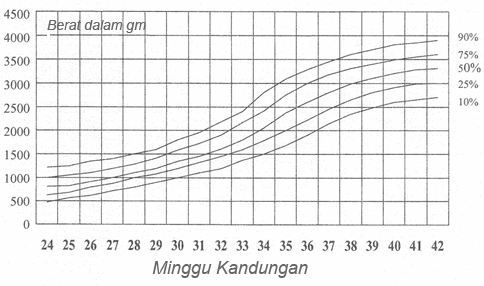What are SGA babies?
Introduction
Normal babies usually weigh about 2.5 kg to 3.5 kg. Small for gestational age (SGA) babies are much smaller than normal babies of the same gestation.
Definition
Small for gestational age babies :
- Birth weight less than 10th percentile for their gestational age (number of weeks of pregnancy).
- These babies weigh less and are smaller than 90% of all other babies of the same gestation.
- Babies whose weight fall in the area below the 10% line in the intrauterine growth chart – refer to diagram.

What are the types of SGA babies?
SGA Babies:
- May be term or preterm.
- Term infants usually weigh less than 2.5 kg.
Types of SGA :
- Symmetrical – proportionately small all over.
- Asymmetrical – the head is proportionately larger compared to rest of body.
What are the causes of SGA babies?
Causes:
- Genetics
- small parents may produce small babies
- some chromosomal abnormalities in babies may cause them to be small
- Intrauterine growth retardation (IUGR).
What is intrauterine growth retardation (IUGR)?
Intrauterine growth retardation (IUGR) occurs when a baby’s growth in the womb is restricted due to shortage of oxygen and nutrients that are needed for proper growth. Therefore factors affecting blood flow to the baby in the womb can lead to IUGR because decreased blood flow will lead to reduced delivery of oxygen and nutrients to tissue and organs.

What are the risk factors for IUGR?
Risk factors in :
Mother
- Very young mothers or elderly mothers
- High blood pressure
- Uncontrolled long standing diabetes
- Chronic kidney disease
- Infections
- Severe anemia
- Smoking / alcohol / illicit drugs
Pregnancy
- Multiple pregnancy (twins, triplets)
- Placenta abruption (placenta separates from womb before time)
- Placenta previa (placenta lies low in the womb and may bleed)
- Poor placental blood flow
- Infections in the tissues surrounding the placenta or uterus
Fetal
- Birth detect – brain, heart / kidney
- Infection eg. Rubella
- Chromosome anomaly eg Tnsomy18
What are the features of an SGA baby?
Term SGA babies look mature like a normal babies except that they are smaller in size.
What problems would an SGA baby have?
- Early complications
- Hypoglycaemia (low blood sugar)
- Polycythaemia (too many red blood cells)
- Hypothermia (cannot maintain body heat)
- Breathing difficulties
- Jaundice
- Electrolyte imbalance
- Late complications
- Dependant on cause of SGA, for example; a baby with chromosomal abnormality like Edward’s Syndrome has a poor outcome with a high risk of mortality within first few days or weeks of life.
- Catch-up growth may occur in some babies while others remain small throughout childhood.
- SGA babies have been associated with a higher risk of adult onset chronic diseases like hypertension, diabetes and heart diseases.
How should SGA babies be managed?
Specific treatment is based on the baby’s condition and needs but most of these babies would need
- Monitoring of blood glucose
- Early and frequent feeding
Some babies may require admission to the neonatal ward for :
- Tube feeding, high caloric feeding
- Intravenous fluids / dextrose (fluids given into the veins)
- Respiratory support
- Blood exchange
- Phototherapy for jaundice
What can be done to prevent babies from becoming SGA?
Antenatal care during pregnancy is very important to :
- Monitor mother’s health
- Manage any maternal illness – example high blood pressure
- Monitor growth of fetus
- Check for any placental abnormalities
- Check for fetal abnormalities
- Plan a safe delivery
Expectant mothers should:
- Avoid harmful substances such as drugs, alcohol and smoking.
- Eat a healthy diet.
| Last reviewed | : | 28 August 2020 |
| Content Writer | : | Dato’ Dr. Lim Nyok Ling |
| Dr. Lim Sern Chin | ||
| Reviewer | : | Dr. Zainab bt. Kusiar |







